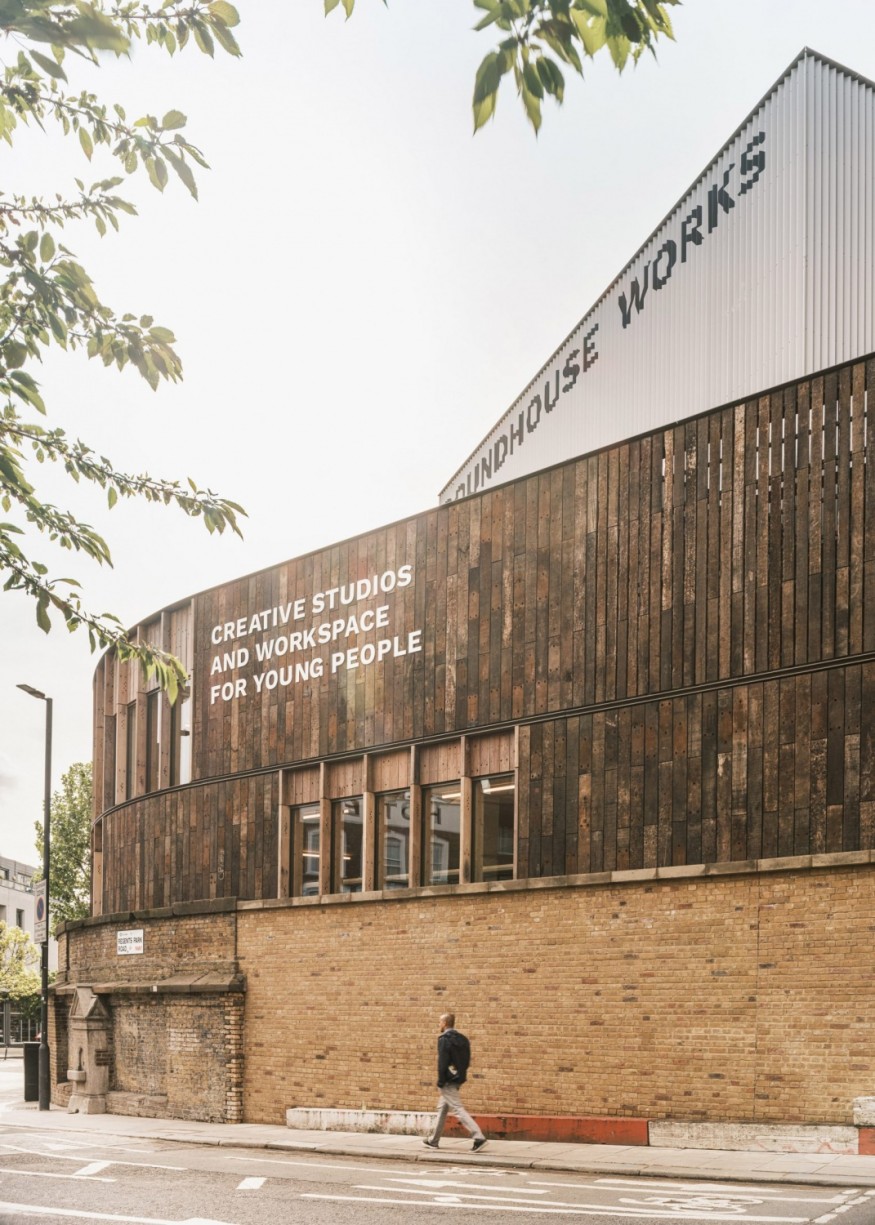Top Eco Architecture Trends 2023: Building a Sustainable Tomorrow
In eco-architecture, 2023 is witnessing an unprecedented surge in innovative and sustainable trends, reshaping the design and construction landscape. From the artistic brilliance of solar installations to the resilience of self-sustaining homes, this article delves into ten standout trends propelling eco-conscious architecture into the future.
Arco del Tiempo (Arch of Time) - Solar Art Installation by Riccardo Mariano
"A Celebration of Time and Energy"

One of the most remarkable trends is embodied by Riccardo Mariano's Arco del Tiempo, an awe-inspiring solar art installation set to grace Houston's East End in 2024. Standing at 100 feet, this monumental piece is a sundial and generates 400,000 kWh of solar energy annually. Mariano's creation not only marks its break-even point but also seeks to impact the climate and community positively.
Innovative Eco-Friendly Concrete from Washington State University
"Building a Greener Foundation"

Engineers at Washington State University are pioneering a new era in construction with an eco-friendly concrete blend. By incorporating biochar from organic waste, this concrete absorbs more carbon than it emits, showcasing a revolutionary approach to sustainable building materials that prioritize strength and environmental responsibility.
LionGlass - A Glass Industry Game-Changer
"Clearing the Path for Sustainable Transparency"

LionGlass, born out of innovation from Penn State University, aims to revolutionize the glass industry. By eliminating carbon-containing materials and lowering glass melting temperatures, LionGlass seeks to cut manufacturing carbon footprints significantly while boosting durability. This trend reflects a commitment to environmentally friendly materials in an industry known for its high ecological impact.
Preserved Townhome Concrete Facades
"Honoring the Past, Building the Future"

Rieder joins Faerber in preserving the original structure, contributing to a trend focused on maintaining the integrity of existing architecture. This approach pays homage to historical significance and aligns with sustainable urban development practices.
Community-Owned Solar Microgrids
"Empowering Communities through Energy Security"

Microgrid projects, like the one in Puerto Rico, showcase a trend towards decentralized, community-owned renewable energy sources. This bolsters energy security and fosters resilient communities capable of generating their power sustainably.
Steel-Cladded Social Housing by Christ & Gantenbein
"Building Communities with Innovation and Compassion"

Addressing social needs head-on, Christ & Gantenbein's steel-cladded social housing in Paris exemplifies a trend in integrating architectural innovation with a commitment to social responsibility. These structures not only provide shelter but also elevate the standards of urban living.
Carbon-Negative Concretes
"Concrete Steps Towards Sustainability"

The advent of carbon-negative concretes signifies a paradigm shift in the construction industry. This eco-friendly concrete, infused with organic materials, underscores a dedication to reducing carbon emissions without compromising the structural integrity of buildings.
Hyper-Ordinary Headquarters by Lab La Bla
"Redefining Ordinary for a Sustainable Tomorrow"

Lab La Bla's "Hyper-Ordinary Materials" challenges conventional design norms, embodying a trend that promotes sustainability through creative material choices. By embracing unconventional materials, architects contribute to reducing environmental impact while fostering innovation.
Railway Sleepers-Clad Buildings by Paddy Dillon
"Building with a Nod to the Past"

Paddy Dillon's collaboration with local studios on projects like the Roundhouse Works showcases a trend in using reclaimed materials for construction. By incorporating railway sleepers, this trend reduces the environmental impact of new building projects and adds a unique historical touch to modern architecture.
As we navigate the evolving landscape of eco-architecture in 2023, these ten trends stand out as beacons of innovation and sustainability. From harnessing solar energy through artistic installations to redefining the materials used in construction, these trends propel us toward a future where architecture seamlessly integrates with the environment, creating spaces that endure and thrive in harmony with our planet.
From Digital Models to 3D-Printed Homes: Jaspreet Kaur Lall Explains How the Innovation Changes the Construction Industry

Future Belongs to Green Construction: Sampath Kumar Paspunoori Explains One of the Key Trends in the Construction Industry

Kamala Harris' Campaign Ad Uses Iconic Visuals from Carrie Mae Weems to Connect with Voters

Historic Ancient Roman Ruins in Baalbek Remain Strong After Israeli Air Strikes; Locals Seek Cultural Protection

4 Ways to Honor Departed Loved Ones in Your Home Design












